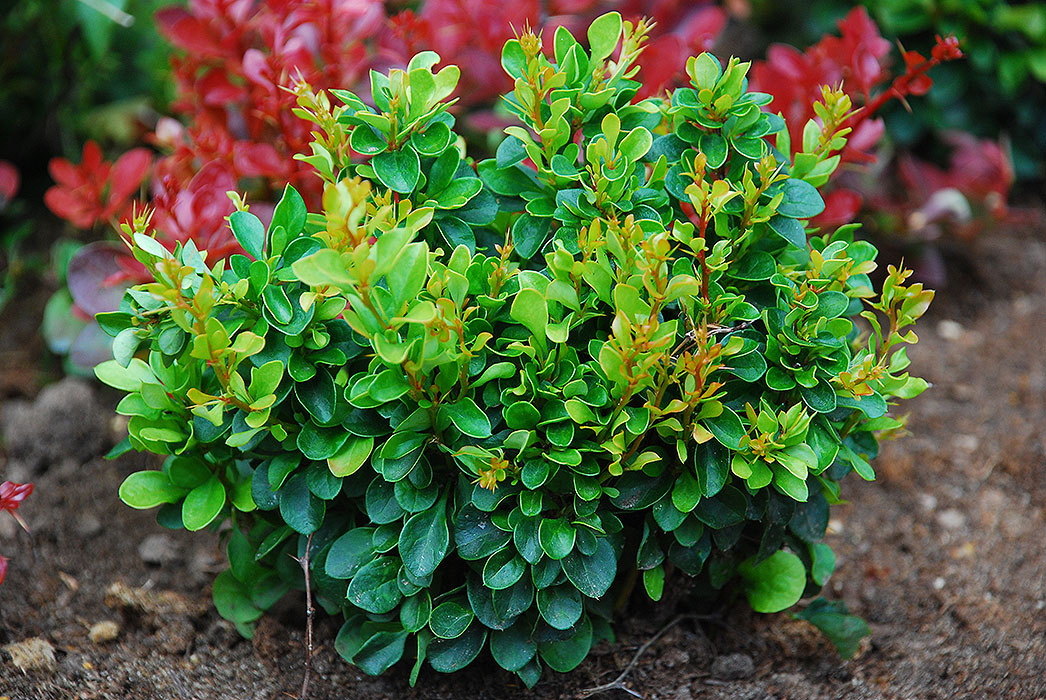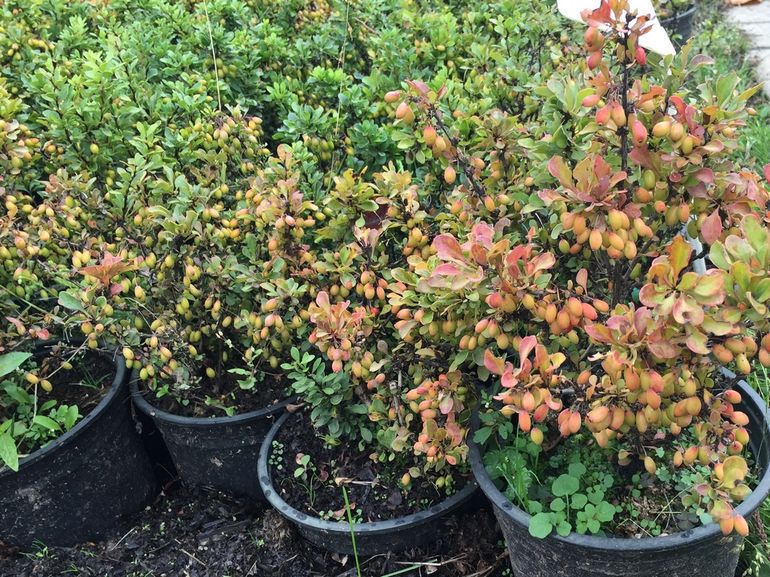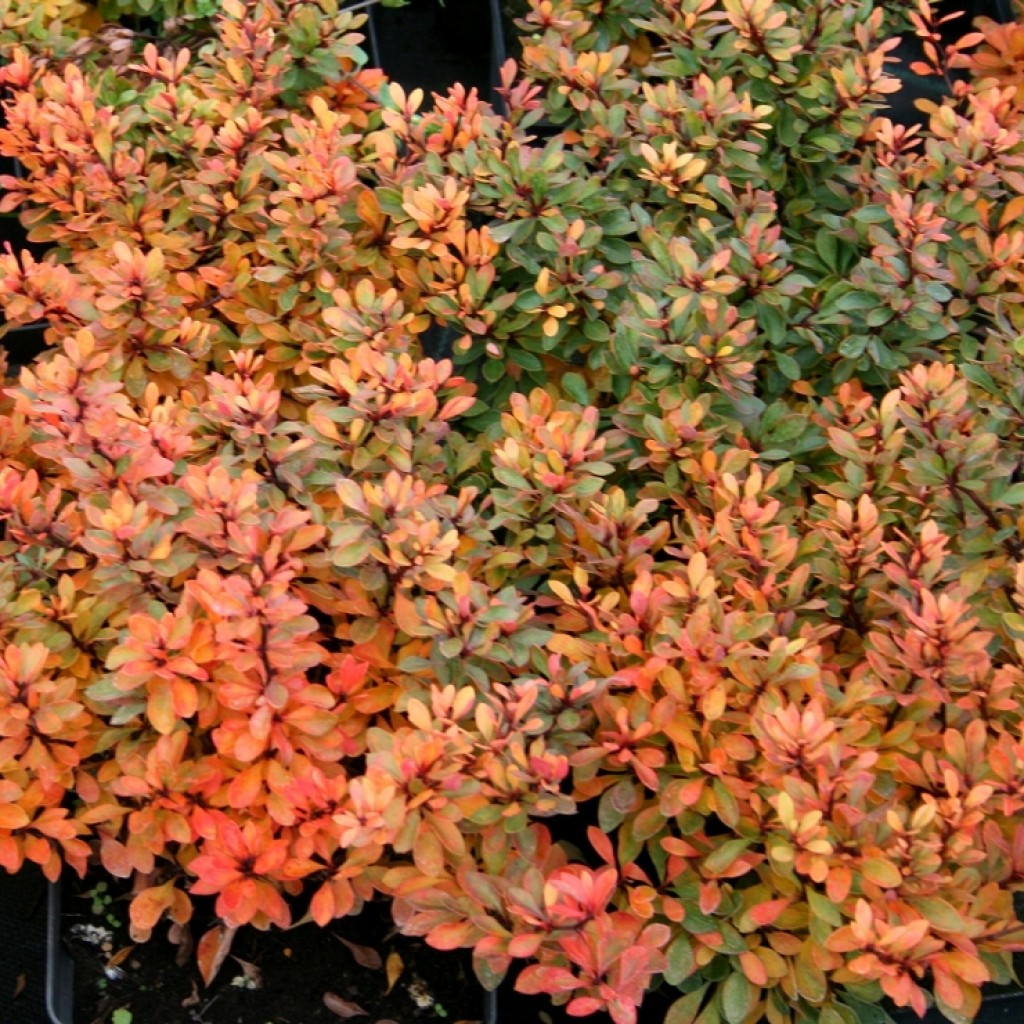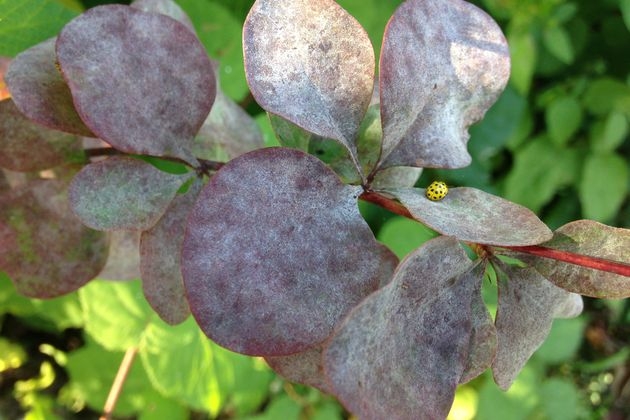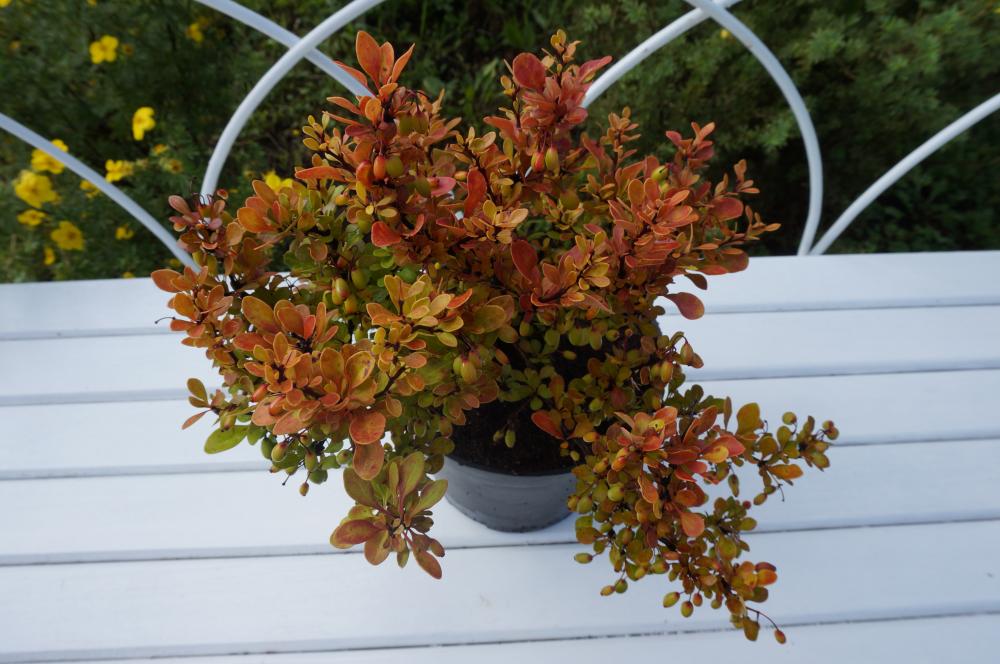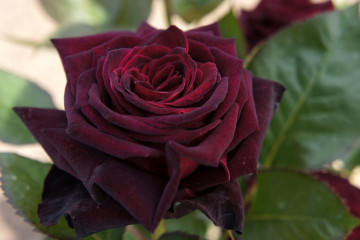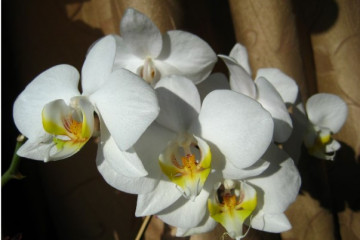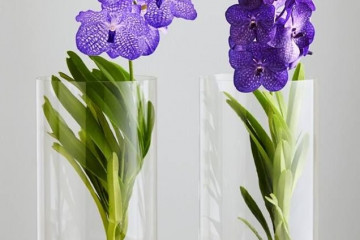Barberry Cobalt - variety description and care
Content:
Barberry Cobalt (Kobold, Kobold) - undersized ornamental shrub. It is actively used for landscaping the site by landscape designers and amateur gardeners. If you need to plant a large area, barberry shoots can be cut and rooted. Further information on growing crops in personal plots.
Description
Tunberg barberry Kobold is a shrub up to 50 centimeters high. The spherical crown consists of short shoots with brown bark and sharp thorns. Ovate leaves grow on the branches. They are green in summer and ruby in autumn.
Barberry blooms in May. The petals of the buds are yellow. Then edible red fruits are formed. They ripen in September-October.
Planting a plant
As a rule, barberry is planted on the site by the seedling method.
Young bushes are purchased in a garden center, or grown from seeds on their own. Plants with a closed root system will work best.
From seed
Sowing is done in spring or autumn. Seeds require stratification for good germination. To do this, they are kept in the refrigerator throughout the winter, and in the spring they are planted in a greenhouse. Or the seed is planted in the fall immediately into the ground. Natural stratification will occur in winter.
Seeds aged 2-3 months in cold conditions are planted as follows:
- loose earth is poured into a box with low sides;
- make grooves in which seeds are laid;
- cover them with earth.
To create the conditions necessary for the rapid germination of seeds, the box is covered with a transparent plastic wrap. When the shoots hatch, the shelter is removed. The grown bushes are transplanted into separate containers, then to the site.
Planting seedlings in open ground
A sunny place is allocated for plants, closed from cold winds. When grown in the shade, the leaves will not have a decorative appearance. Tunberg barberry Cobalt is planted on the site as follows:
- dig a hole 40 centimeters deep and 50 centimeters wide;
- pour out a fertilizer consisting of potassium, phosphorus, nitrogen, and mixed with the soil;
- pour a substrate consisting of sod land, humus, sand;
- put a bush in the middle, straighten the roots, cover with soil mixture;
- watered abundantly.
Bushes are planted no older than 3-4 years. The older the plant is, the harder it is to endure a transplant.
How to care
Care consists in timely watering, feeding, sanitary pruning. In the spring, prophylactic spraying with insectofungicides can be carried out.
- Watering
Berberis Thunbergii Cobalt is drought-resistant, can do without watering for a long time. Moistening the trunk circle is necessary only in dry, hot weather for a long time.
Abundant watering is necessary for plants only in the first time after planting. Moisten the earth in the morning or evening. Water only the root system, without affecting the green part.
- Top dressing
When planting barberry in fertile land, top dressing is applied in the 3rd year. In the spring, nitrogen is used: 20 grams of urea is dissolved in a bucket of water.Nutrients are introduced into pre-moistened soil. In autumn, peat is poured into the trunk circle.
It should be noted that Cobalt barberry does not make great demands on fertility, it will develop well even without fertilization.
- Pruning
Sanitary pruning is performed throughout the season. Remove old, sick, frozen shoots.
Forming pruning is essential for shrubs planted as hedges. The procedure is carried out at the beginning and at the end of summer.
Reproduction methods
There are several ways to breed Berberis Thunbergii Kobold (Tunberg Cobalt barberry) on the site in several ways: by seeds, cuttings, layering. The first option is usually not used by gardeners due to the time-consuming and labor-intensive process. In addition, there is a high probability that not all the qualities declared in the variety description will be transferred.
Propagation by cuttings is performed as follows:
- lignified cuttings are cut with a length of 10-15 centimeters, having 2-3 internodes;
- the lower sections are dusted with Kornevin;
- planted in several pieces in pots;
- containers are covered with foil.
When the cuttings are rooted, new leaves are released, the shelter is removed. Grown up young bushes are planted on the site.
Another popular breeding method for barberry is layering. The procedure is carried out in the spring. For this, grooves are made near the bushes in which the lower shoots are laid. They are pinned, covered with earth. Soon, new plants will appear, which are separated from the parent bush and planted in a permanent place.
Diseases and pests
The barberry tunberg Cobalt has good immunity. But with thickened plantings, dry or rainy weather, the bushes can be affected by diseases and pests.
If first a white bloom appears on the lower part of the leaves, and then on the entire plant, the barberry is affected by powdery mildew. It is necessary to fight the disease at the first sign. To do this, remove the affected parts, spray the bush with a solution of colloidal sulfur.
The main plant pest is the barberry aphid. She sucks the juices from the leaves, after which the bushes die. Get rid of the insect by treating it with a solution of laundry soap.
Preparing for winter
Barberry can withstand frosts down to -35 ° С. Therefore, adult bushes do not need shelter. It is enough to pour peat or humus mulch into the root circle. Young plants are covered with spruce branches, agrofibre. As soon as the sun warms up in the spring, the shelter is removed.
Use in landscape design
Barberry Cobalt is used on site in various configurations. By planting different varieties in a mixborder, you can create a landscape composition with a varied color palette.
You can decorate a rocky garden, a rock garden, an artificial reservoir with bushes. Of these, a hedge is constructed, which will reach the greatest attractiveness in 4-5 years, after the crowns close. A singly planted plant will look beautiful in design.
Healing properties
In folk medicine, not only berries are used, but also leaves, bark, roots of culture. One of the positive characteristics of the tunberg barberry is that it has the following medicinal properties:
- cleans the blood;
- protects the body from radiation;
- has an anti-inflammatory effect;
- reduces the risk of cancer;
- calms the nervous system.
Use barberry in the form of tinctures and decoctions.
Barberry Cobalt is an unpretentious plant that is very popular with gardeners. Bushes with leaves that change color from green in spring to red in autumn can become a decoration of a garden plot.
